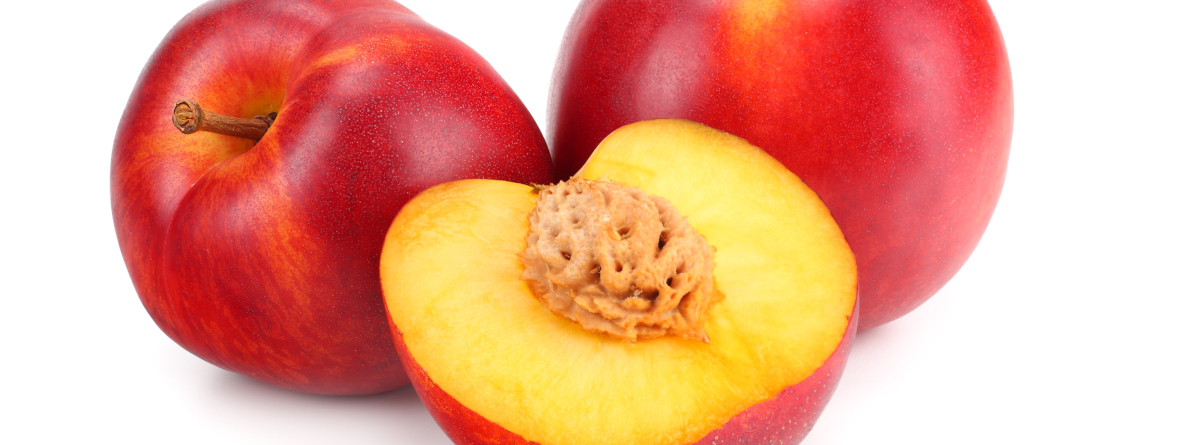
How to select
Choose nectarines that are firm and smooth.
How to prepare
- Rinse nectarines under running water and pat dry with a clean cloth or paper towel.
- Cut the nectarine through the middle until the knife hits the pit.
- Move the knife around the whole nectarine to cut two halves.
- Twist each half in opposite directions to separate each half from the pit.
- You may have to cut some fruit away from the pit. Either peel or leave skin.
How to store
Ripen nectarines in a paper bag. Ripe nectarines can be stored at room temperature for 2-3 days.
Peak season
Summer
Ways to use
- Add chopped nectarines to muffins and other homemade baked goods.
- Cut a nectarine into halves and set the pit aside; eat the two halves as a refreshing snack.
- Put some tang in your breakfast: Top oatmeal, cereal, toast, or whole grain pancakes with nectarines.
- Grill slices on both sides for a caramelized treat.
Fun facts
- Nectarines belong to the same family as roses.
- Nectarines are grown all over the world including China, Spain, Italy, Greece, America, Turkey, Iran, Chile, and Argentina.
- Nectarines come in yellow, red, and white varieties.
Nutrition info and facts
Nectarines are high in copper, potassium, and vitamins B3 & C. The vitamin C content of nectarines supports immune health. The potassium content of nectarines can help lower blood pressure and therefore may decrease complications with pregnancy. Nectarines aid in iron absorption.
1 medium nectarine = 63 calories, 15 g carbohydrate, 1.5 g protein, 2 g fiber, 11 g sugar, 10% DV vitamin B3 (niacin), 14% DV copper
Learn more
Growing stone fruits in the home garden (UMN Extension)
Sources
Have a Plant. Nectarine.
Healthline. 7 Health benefits of nectarines, backed by science. July 6, 2021.
Kids Fruit. N is for Nectarine.
Solid Starts. Nectarine.